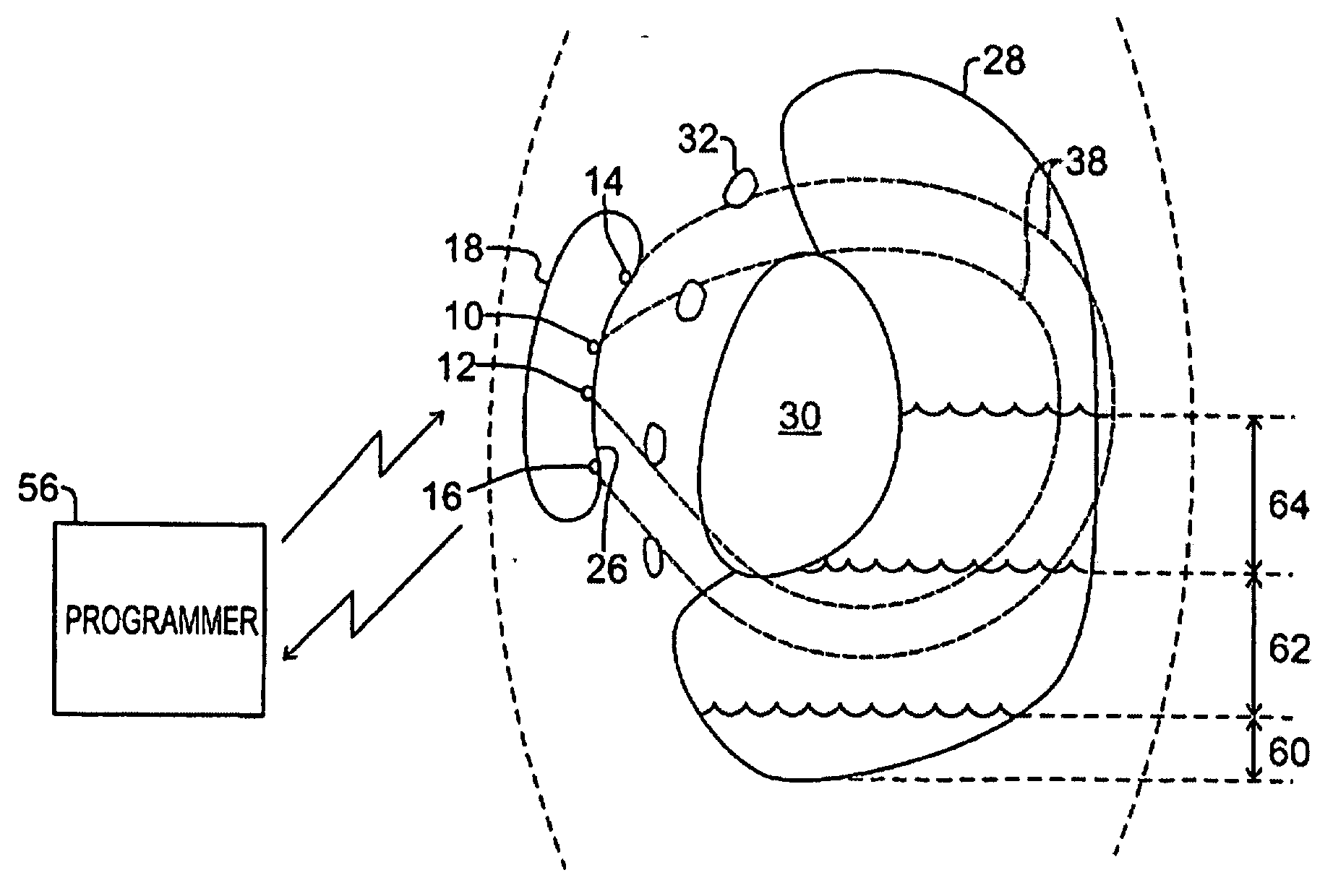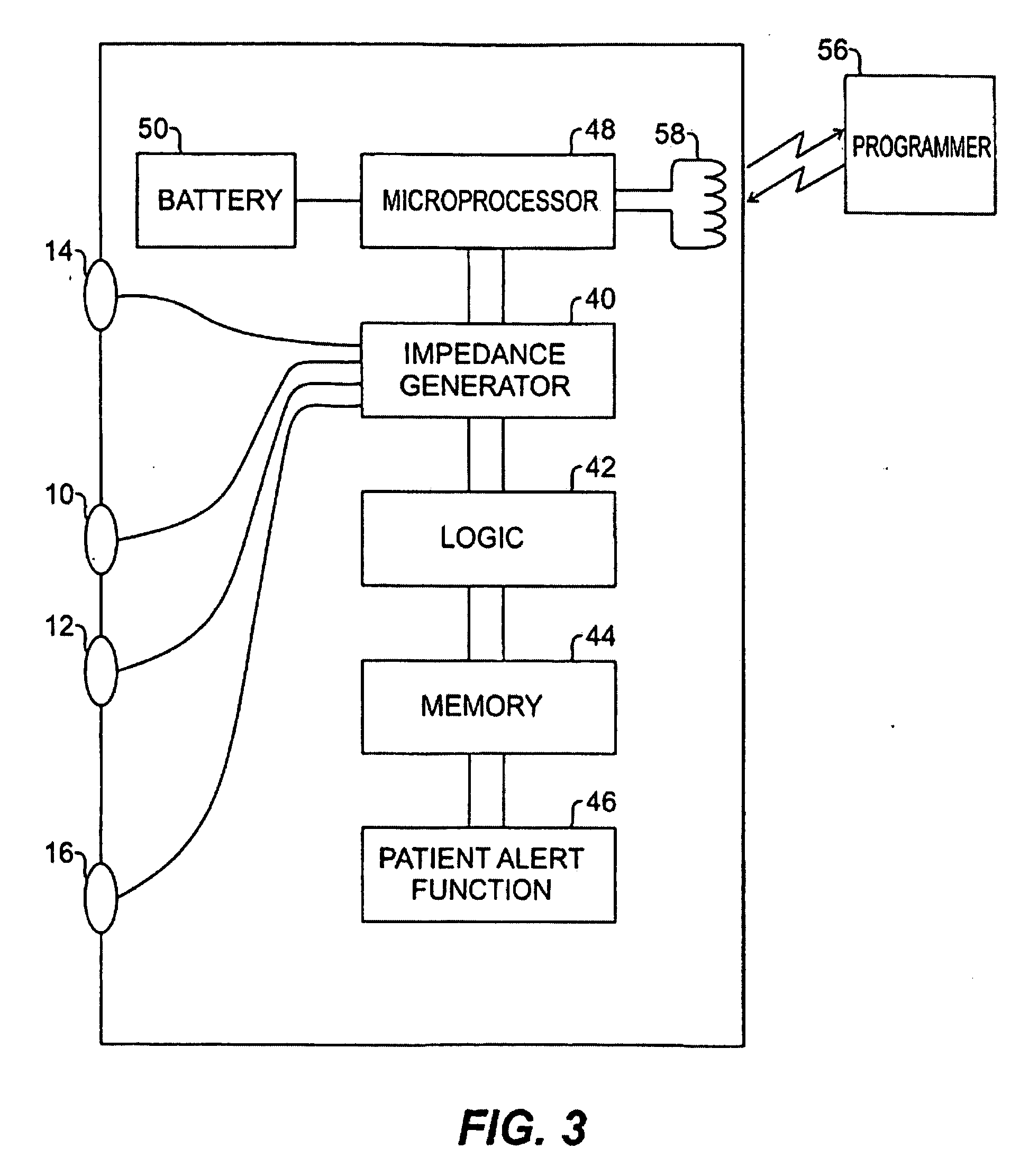Remote Control of Implantable Device Through Medical Implant Communication Service Band
a technology of implantable devices and communication services, applied in the field of electronic medical devices, can solve the problems of increased blood volume congested to the lungs, left heart failure, and inadequate pumping function of the right heart, and achieve the effect of reducing resistance measuremen
- Summary
- Abstract
- Description
- Claims
- Application Information
AI Technical Summary
Benefits of technology
Problems solved by technology
Method used
Image
Examples
case 24
[0037] Case 24 is a standard rectangular case with rounded edges and a header of epoxy resin on top (not shown in FIG. 1). In one preferred embodiment, Case 24 has a curvilinear shape which presents a concave shape or surface 26 on one side (in contrast to an edge of the case) and a convex shape on the opposite side of the case. Four surface mounted electrodes 10, 12, 14 and 16 are positioned in spaced-apart relationship on the slightly concave surface 26, with each electrode being electrically insulated from the case 24 itself. The electrodes should be of low polarization, preferably composed of or coated with iridium oxide. By way of example, “inner” electrodes 10 and 12 are spaced apart on the concave side inward of opposite edges and centrally along the length of the case, while “outer” electrodes 14 and 16 are spaced farther apart—preferably, by at least about 4 cm—on that same side inward of opposite edges and centrally along the width of the case. The shape of the case is des...
PUM
 Login to View More
Login to View More Abstract
Description
Claims
Application Information
 Login to View More
Login to View More - R&D
- Intellectual Property
- Life Sciences
- Materials
- Tech Scout
- Unparalleled Data Quality
- Higher Quality Content
- 60% Fewer Hallucinations
Browse by: Latest US Patents, China's latest patents, Technical Efficacy Thesaurus, Application Domain, Technology Topic, Popular Technical Reports.
© 2025 PatSnap. All rights reserved.Legal|Privacy policy|Modern Slavery Act Transparency Statement|Sitemap|About US| Contact US: help@patsnap.com



